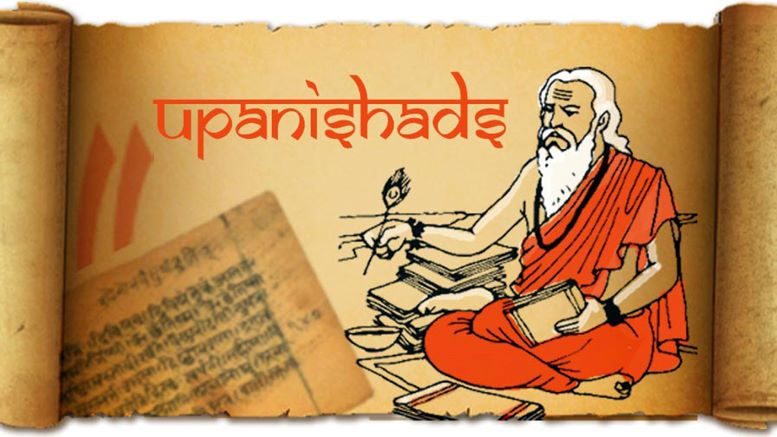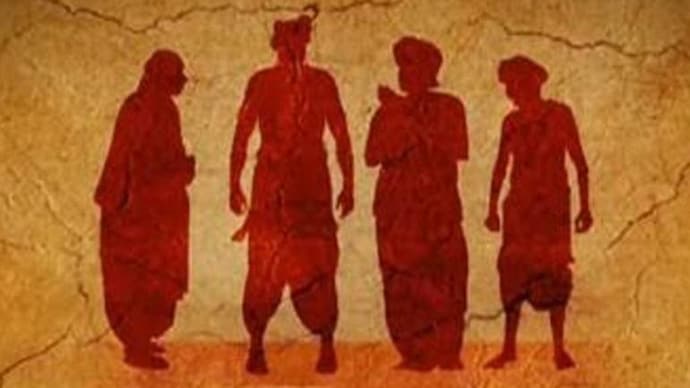Table of Contents
The Later Vedic period holds great importance in the ancient history of India, spanning roughly from 1000 BCE to 500 BCE. This era stands as a transitional phase, signifying a shift from the earlier Vedic period. While the earlier period primarily revolved around the Rigvedic hymns and the Brahmanas, the Later Vedic period witnessed the emergence of new literary and cultural elements, including the Upanishads and epic works like Ramayana and Mahabharata.
Later Vedic Period, New Philosophical Ideas
The Later Vedic period saw the emergence of new religious, philosophical, and social ideas, which played a significant role in shaping the Indian civilization. The period was marked by a transition from the pastoral and semi-nomadic lifestyle of the earlier Vedic period to the settled agricultural communities of the later Vedic period.
Later Vedic Period- Rise of New Kingdoms
The period was marked by the rise of new kingdoms and political entities, such as the Magadha Empire, the Kuru Kingdom, the Panchala Kingdom, and the Videha Kingdom. The period also saw the development of trade and commerce, leading to increased urbanization and the rise of new towns and cities.
Later Vedic Period- Emergence of Upanishads
One of the most significant developments of the Later Vedic period was the emergence of the Upanishads, which are a collection of philosophical texts that deal with the nature of reality, the self, and the universe. The Upanishads introduced the concept of the Brahman, which is the ultimate reality and the goal of spiritual practice. They also introduced the concept of Atman, which is the individual soul, and emphasized the importance of self-realization and liberation.

Later Vedic Period- New Social Institutions
The Later Vedic period also saw the development of new social institutions, such as the varna system, which divided society into four social classes based on occupation, and the ashrama system, which prescribed four stages of life, namely Brahmacharya (student life), Grihastha (householder life), Vanaprastha (retirement life), and Sannyasa (renunciation).

Later Vedic Period- Art and Literature
The period also saw the development of new forms of art and literature, such as the epics like Ramayana and Mahabharata, which continue to be an important part of Indian culture to this day. The period also witnessed the development of new styles of architecture, as seen in the construction of temples and other religious structures.
The Later Vedic period was a significant era in the history of ancient India, marked by the emergence of new religious, philosophical, and social ideas, the rise of new kingdoms and political entities, the development of trade and commerce, and the growth of new forms of art and literature. The period played a crucial role in shaping the Indian civilization and continues to be an important part of Indian history and culture.
Later Vedic Period Timeline
The Later Vedic Period is important in the history of ancient India. This period spans from around 1000 BCE to 600 BCE and is marked by the development of the Vedic religion, the emergence of new kingdoms and social orders, and the beginning of the decline of the Indus Valley Civilization. Here is a timeline of the major events that occurred during the Later Vedic Period:
Later Vedic Period Timeline: 1000 BCE
The Later Vedic Period begins around this time. The Aryans, a nomadic tribe from Central Asia, migrated into the Indian subcontinent and start settling down in the Indo-Gangetic plain.
Later Vedic Period Timeline: 900 BCE
The Rigveda, a collection of ancient Vedic hymns, is composed during this period. The Rigveda is one of the oldest and most important religious texts in Hinduism and provides insight into the society and culture of the time.
Later Vedic Period Timeline: 800 BCE
The Vedic religion evolves during this period and the practice of ritual sacrifice becomes an important part of religious life. The Brahmins, a priestly class, emerged as the dominant group in society and acquired a great deal of influence and power.
Later Vedic Period Timeline: 700 BCE
The Later Vedic Period witnesses the emergence of several new kingdoms, including the Kuru and Panchala kingdoms. These kingdoms were ruled by powerful chieftains and princes who competed for supremacy in the region.
Later Vedic Period Timeline: 600 BCE
The Later Vedic Period comes to an end around this time. The Upanishads, a collection of philosophical texts, are composed during this period. The Upanishads explore the nature of reality, the self, and the universe, and form the basis of Hindu philosophy.
The Later Vedic Period was a time of significant change and development in ancient India. It was marked by the emergence of new religious and philosophical ideas, the growth of powerful kingdoms, and the establishment of a social order based on caste. The legacy of this period can still be seen in modern-day India, where Hinduism remains a dominant religion and caste continues to play a role in society.
Later Vedic Period Religion
The Later Vedic Period, also known as the Iron Age in India, was a significant phase in the development of Hinduism. This period, which began around 1000 BCE and lasted until the 6th century BCE, saw the emergence of new religious practices, beliefs, and rituals that became an integral part of the Hindu religion.
- The Vedic period is divided into two main phases – the Early Vedic Period (1500 BCE-1000 BCE) and the Later Vedic Period (1000 BCE-600 BCE).
- The emergence of new social, economic, and political structures in India characterizes the Later Vedic Period. This period saw the rise of agriculture, trade, and the formation of large kingdoms.
- Religion during the Later Vedic Period was centered around the worship of numerous gods and goddesses, who were believed to control the forces of nature.
- These deities were worshipped through elaborate rituals, sacrifices, and hymns, which were recited by priests called Brahmins.
- One of the most significant developments during this period was the rise of the concept of karma and reincarnation.
- The idea of karma, which means ‘action’ or ‘deed’, is the belief that every action has a consequence, and their past actions determine one’s current life.
- Reincarnation, on the other hand, is the belief that the soul is reborn after death into a new body, based on the accumulated karma of their past lives.
- The Later Vedic Period also saw the emergence of the Upanishads, which are a collection of philosophical texts that explore the nature of reality, the self, and the universe.
- These texts are considered some of the most important works in Hinduism and are still studied and revered today.
- The Later Vedic Period also saw the rise of new gods and goddesses, such as Shiva and Vishnu, who became popular in the Hindu pantheon.
- Elaborate rituals, devotional songs, and the construction of temples and shrines characterized the worship of these deities.
- Another significant development during this period was the emergence of the caste system, which divided society into four main castes – Brahmins, Kshatriyas, Vaishyas, and Shudras.
- The caste system was based on the idea that each person was born into a particular caste based on their past karma and that this determined their occupation and social status.
The Later Vedic Period, which saw the formation of new religious ceremonies, practices, and beliefs, was a pivotal time in the evolution of Hinduism. During this time, the Upanishads appeared, new gods and goddesses were worshipped, the caste system developed, and the ideas of karma and reincarnation gained traction. These changes paved the way for Hinduism to develop into the intricate and multifaceted religion it is today.

Later Vedic Period Literature
The Later Vedic period, also known as the Vedic age, is an important era in Indian history, spanning from 1000 BCE to 500 BCE. During this time, the Vedic literature was composed, which contains some of the earliest religious and philosophical texts in the Indian subcontinent. The literature of the Later Vedic period can be divided into two categories, the Samhitas and the Brahmanas.

Later Vedic Period Literature: Samhitas
The Samhitas are the earliest layer of the Vedic texts and include the Rigveda, Yajurveda, Samaveda, and Atharvaveda. These texts are considered to be the most ancient sacred texts of Hinduism and are composed in Vedic Sanskrit. The Rigveda is the oldest and most important of the Samhitas, comprising of 1028 hymns that are addressed to various gods and goddesses, such as Indra, Agni, and Soma.
The Samhitas were composed by the priestly class, known as the Brahmins, who were responsible for performing Vedic rituals and ceremonies. These texts provide a detailed account of the religious and social practices of the ancient Indian society, including the rituals of sacrifice, the worship of deities, and the importance of the Brahmin caste.
Later Vedic Period Literature: Brahmanas
The Brahmanas are the second layer of Vedic literature, composed after the Samhitas. They are commentaries and explanations of the ritualistic practices and sacrifices described in the Samhitas. The Brahmanas are also composed in Vedic Sanskrit and provide detailed instructions on the performance of rituals, such as the proper way to construct altars and offerings to the gods.
Later Vedic Period Literature: Upanishads
The Later Vedic period also saw the emergence of the Upanishads, which are considered to be the philosophical texts of Hinduism. The Upanishads contain the teachings of the ancient sages, such as Yajnavalkya, Uddalaka Aruni, and Prajapati, who discuss the nature of reality, the self, and the ultimate goal of human existence. The Upanishads form the basis of Vedanta, one of the six schools of Hindu philosophy.
Later Vedic Period Literature: Aranyakas and Shrautasutras
In addition to the Samhitas, Brahmanas, and Upanishads, the Later Vedic period also saw the development of the Aranyakas and the Shrautasutras. The Aranyakas are forest treatises, which were composed by the forest-dwelling hermits and contain the esoteric teachings of the Vedas. The Shrautasutras are manuals on the performance of the Vedic rituals and ceremonies.
In conclusion, the Later Vedic period was a significant era in Indian history that saw the composition of some of the earliest and most important religious and philosophical texts in the Indian subcontinent. The Vedic literature, comprising of the Samhitas, Brahmanas, Upanishads, Aranyakas, and Shrautasutras, provides a detailed account of the religious and social practices of the ancient Indian society and forms the basis of Hinduism, one of the world’s oldest and most complex religions.
Check: All UPSC History Notes



 TSPSC Group 1 Question Paper 2024, Downl...
TSPSC Group 1 Question Paper 2024, Downl...
 TSPSC Group 1 Answer key 2024 Out, Downl...
TSPSC Group 1 Answer key 2024 Out, Downl...
 UPSC Prelims 2024 Question Paper, Downlo...
UPSC Prelims 2024 Question Paper, Downlo...





